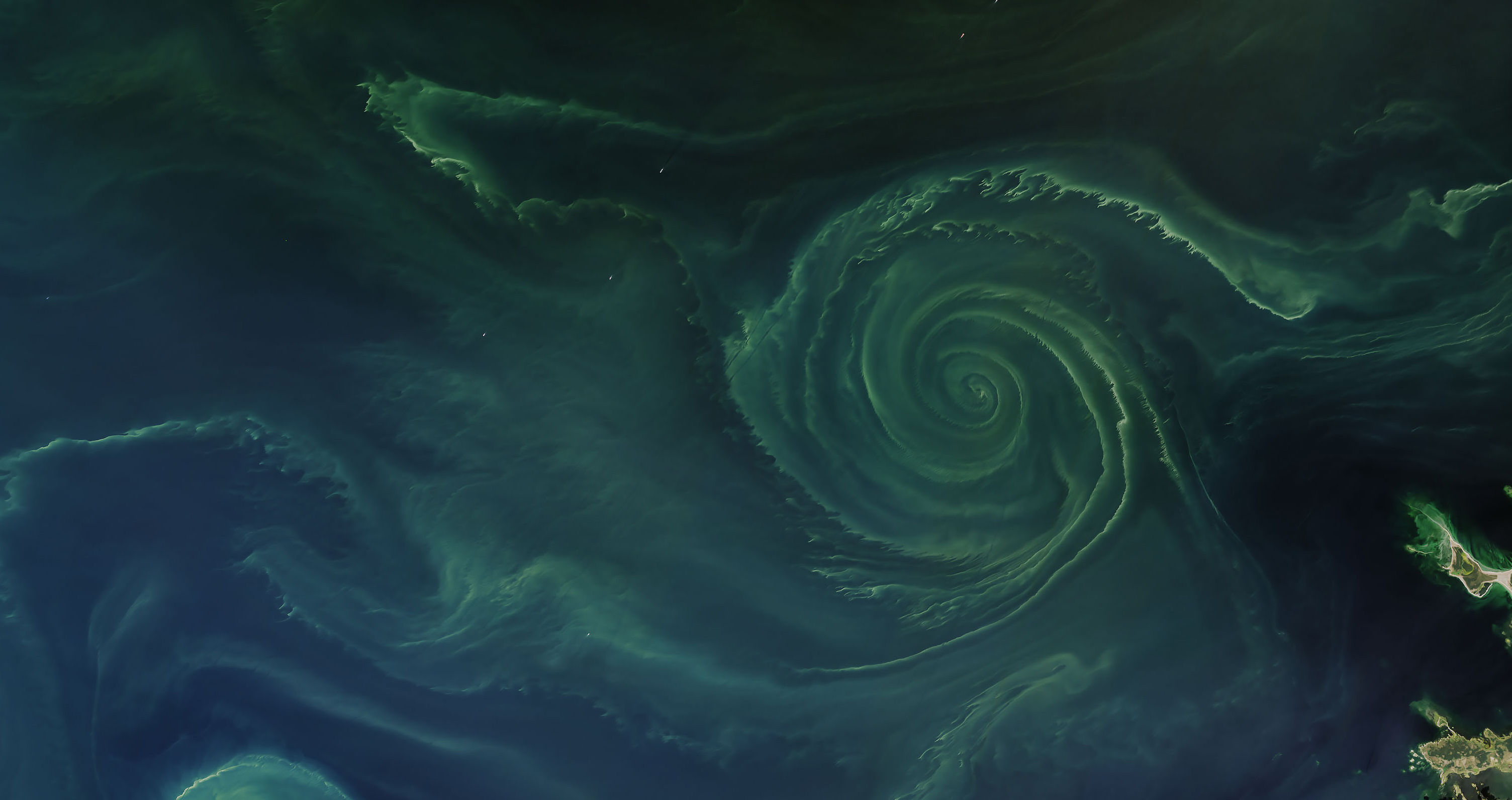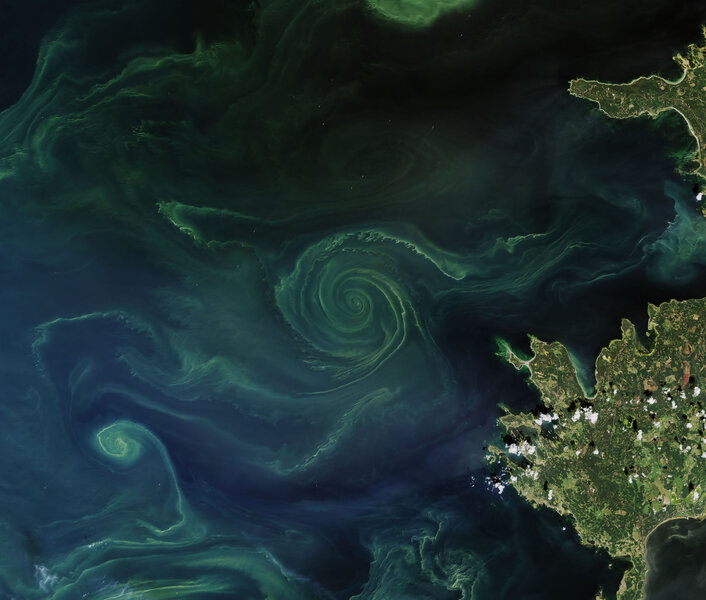Create a free profile to get unlimited access to exclusive videos, sweepstakes, and more!
A swirl of algae is gigantic and beautiful... but is a harbinger of something darker

It’s northern hemisphere summer, and you know what that means: phytoplankton blooms!
No, really. These microscopic plants drift along in the sea surface currents, busily absorbing sunlight and using it as an energy source to tear apart carbon dioxide in the air and combine it with water, creating more complex carbohydrates. These molecules act a little bit like batteries, storing that energy for later use (we humans use them the same way). And in the end, this process releases oxygen into the oceans and atmosphere — it’s thought that well over half the oxygen in our air is produced by phytoplankton!
In the summer, warmer waters plus more abundant sunlight (and sometimes nutrients washed from land to sea) can urge the wee algae cells to be fruitful and multiply, producing what are called blooms. These can be huge, and easy to spot in satellite images.
Like, say, this one:
Holy diatomaceous vortices!
This image, taken by the Earth-observing Landsat 8 satellite on July 18, 2018, shows a phytoplankton bloom in the Bay of Finland (the peninsula to the upper right is part of the Estonian island Hiiumaa, and the one at the bottom right is Saaremaa). The main body of the swirl is about 30 km across, so it’s pretty dang big.
The swirl itself is due to water currents, making it look like a teal hurricane in the water. It’s lovely.
But it bodes ill. As the Earth Observatory Image of the Day site reports, oxygen levels in the nearby Baltic Sea are lower than usual. You might think that the phytoplankton would help, since they makes oxygen. But that’s not always the net result. Phytoplankton are plants, so they are born, they live, and they die. When there’s a bloom, there’s more phytoplankton, but that means there are more to die. They sink down and are consumed by bacteria that use up the oxygen in the water in the process. The net result is less oxygen in the seas, and this can create huge dead zones, where nothing can live.
That’s actually a big problem. Over time, scientists have noticed that these zones are growing. Locally this can be due to phytoplankton blooms (which themselves will increase as waters warm), but a basic rule of physics is that warmer water cannot contain as much dissolved gas as cooler water. The planet is warming, so the oceans are having a harder time maintaining oxygen levels. This is exacerbated by increased carbon dioxide in the air, which (despite warmer water, which still does absorb some gas) can dissolve in the oceans and create carbonic acid. Our oceans are getting more acidic, and this is killing off marine life as well.
There’s a lesson here. In science you sometimes need to take a step back to see the whole picture, whether it’s seeing a phytoplankton bloom, seeing its effects, or seeing the context in which it occurs. But all of these are guided by the invisible hand of global warming.
Which, to be honest, is getting more visible every day. There is beauty here, to be sure, but it belies a deeper ugliness.















